This month the OISE Library Lobby Display is highlighting the pioneers in the Progressive Educational Movement. Although the movement began in the late nineteenth century, its legacy is is still with us, seen in education that values the student’s interests in helping to foster their own developmental learning experiences. In this display, you’ll find books written by educators who have introduced a different model of education, such as Dewey, Montessori, Pestalozzi, Steiner, Herbart and more. The display also includes progressive education kits that can be used in the classroom for teaching.
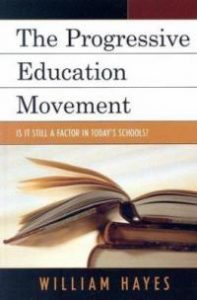 The Progressive Education Movement by William Hayes
The Progressive Education Movement by William Hayes
In this book, William Hayes considers whether the progressive education is still a relevant factor in today’s schools. With this book, Hayes considers four contemporary initiatives that have threatened the continued influence of the progressive education movement. These factors include the “back to basics movement,” mandated state curriculum standards, high-stakes testing, and school accountability. Hayes also considers the past, present, and possible future of the progressive education movement. The contents of the book includes the rise of the progressive educational movement, John Dewey, pioneers in the movement, and the progressive educational movement throughout the years; beginning with the first half of the twentieth century.
The Montessori Method by Maria Montessori, with an introduction by J. McV. Hunt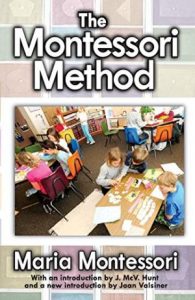
Maria Montessori (1870-1952) was an Italian doctor and educator acclaimed for her educational method on early childhood learning that builds on the way children naturally learn. First published in Italian in 1909 and then translated into English in 1912, The Montessori Method provides theories with aims to fulfill children’s learning potential, emotionally, physically and intellectually. Before diving into the critical chapters of The Montessori Method the reader is first introduced to Maria Montessori’s pedagogy by J. McV. Hunt, who provides the reader with a brief on Montessori’s educational background and successful work. The Montessori Method hopes to provide answers to the following issues: “Why the explosion of interest in 1912 and the equally sudden fall 1914?” and “Why revisit Montessori today?” Each chapter provides the reader with key factors in Montessori’s educational practices with pedagogical emphasis on “sensory learning.” This book may help future educators who wish to incorporate Montessori practices in the classroom.
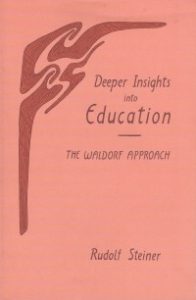 Deeper Insights into Education: The Waldorf Approach by Rudolf Steiner
Deeper Insights into Education: The Waldorf Approach by Rudolf Steiner
Rudolf Steiner (1861–1925) first formulated the movement of what became Waldorf education in 1907 in an essay titled “The Education of the Child in the Light of Anthropology.” Steiner’s experiences as a tutor and educator started the movement of what has now been now adopted in over 300 schools worldwide. What began as a school initially intended for children of factory workers launched the wider venture of the Waldorf approach to education. The Waldorf approach became a new art of education with emphasis on its anthropological foundation based on the body, soul, and spirit of a growing child. This approach to education has now been adopted by schools in Europe, the United States, Canada, South America, South Africa, Australia, and New Zealand. In the introduction, written by Rene M. Querido, Querido expresses that the Waldorf education would be considered a holistic approach, aiming to unfold the capacities in the child and their stages of development. This book will provide readers with Steiner’s comprehensive teachings that may be helpful to those who hope to learn about the Waldorf Approach to education.
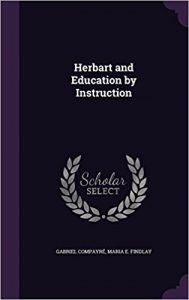 Herbart and Education by Instruction by Gabriel Compayré; translated by Maria E. Findlay
Herbart and Education by Instruction by Gabriel Compayré; translated by Maria E. Findlay
Written by author Gabriel Compayré, Herbart and Education by Instruction is part of the series Pioneers in Education, which recounts Jean-Frederic Herbart’s (1776-1841) influence and life’s work in philosophy and education. Herbart led the interest in Realism and is considered among the founders of modern scientific pedagogy. This book is written with aims to understand Herbart’s psychology and its pedagogical consequences.
Compayré explores how Herbart wanted to illuminate all parts of teaching and education through his theory of education, known as Herbartianism. Comprised of five chapters, this book covers topics such as the life of Jean Jean-Frederic Herbart, Herbart’s intellectual pedagogy and psychology, Herbart’s understanding of the moral experiences of the child, and Herbart’s influence on the science of education and the study of education. This is a great read for those interested in Herbart’s faith in instruction from parents and educators.
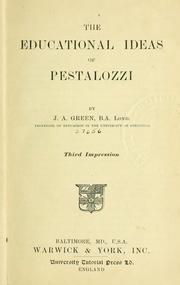 The Educational Ideas of Pestalozzi by J.A. Green and B.A. Lond
The Educational Ideas of Pestalozzi by J.A. Green and B.A. Lond
Written by authors J.A. Green and B.A. Lond, professors of education at the University of Sheffield, this book intends to expound the fundamental doctrines of Johann Heinrich Pestalozzi (1746-1827), a Swiss educational reformer. This book begins with a general historical introduction of the history of education in Western Europe and the influence of the Renaissance and Reformation. Chapters two and three review Pestalozzi’s life, his interest in social reform amidst a political struggle, and his work in Stanz, Burgdorf schools and Yverdun Institute. Chapters 4 through 7 cover Pestalozzi’s views, ideas, practices and theory to education. Chapter 8 reviews “Science of Education” in which Pestalozzi believed to provide guidance for teachers. The last chapter covers Pestalozzian principles and spirit that have influenced other educational thinkers like Herbart, Froebel and Niemeyer.
This book may perhaps be useful in understanding the extent of Pestalozzi’s work and the character of his many institutions. Pestalozzi was also the forerunner of Jean-Frederic Herbart’s influence on the science of education, which makes this text helpful for understanding Herbart’s work.
